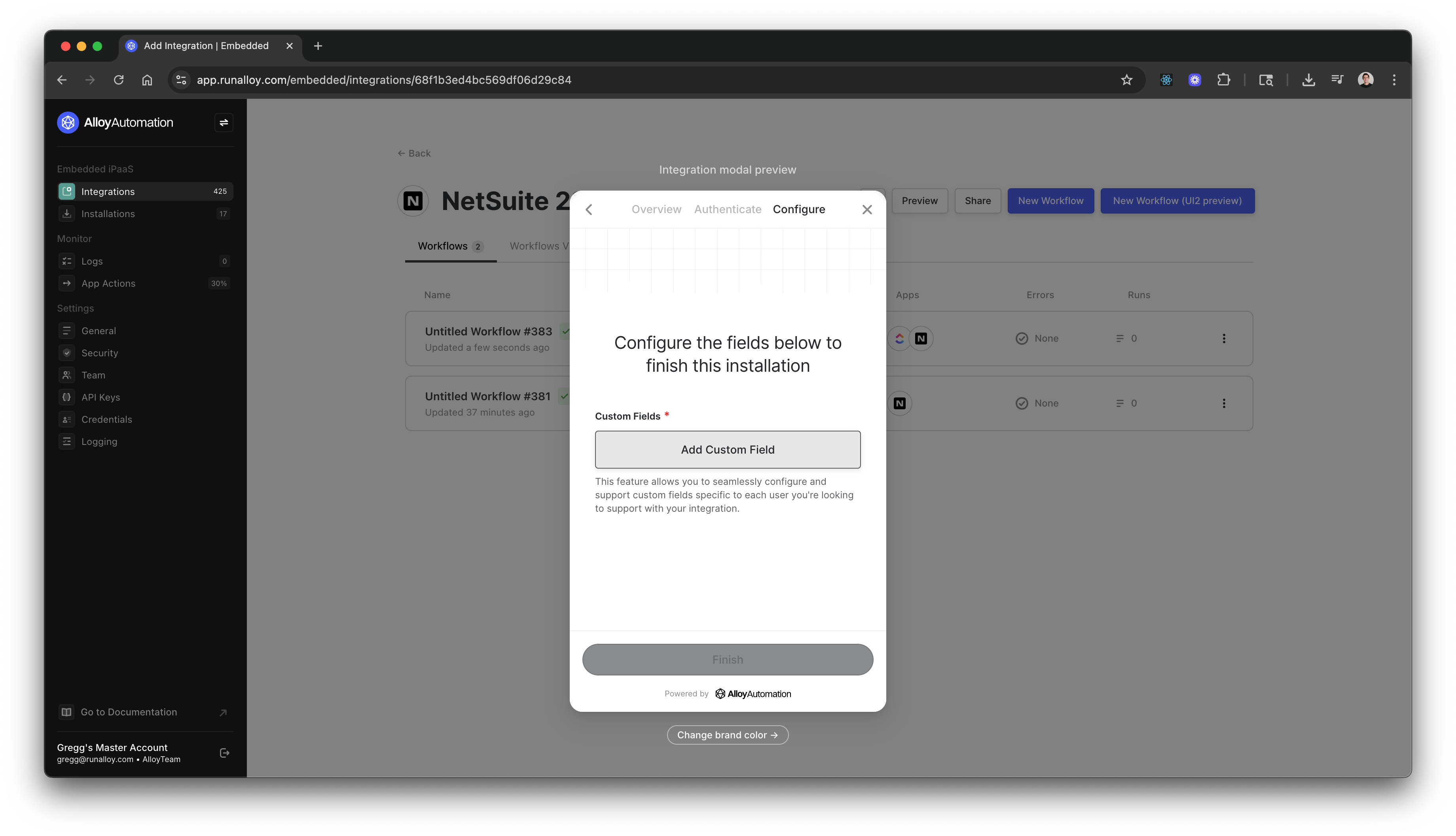Skip to main contentThe Challenge with Custom Fields
Enterprise applications allow organizations to extend standard object schemas with custom fields tailored to their specific business needs. While this flexibility empowers your users, it creates a challenge for integration builders: how do you map data to fields that don’t exist in the standard schema?
Consider this scenario: You’re building a NetSuite integration that creates Invoices. Your integration maps standard fields like customer name, order date, and line items. However, one of your customers has added a custom field called VI_ORDER_NAME to their NetSuite Invoice object, which they use as the primary identifier for orders.
Without support for custom fields, your integration would fail to populate this critical field, forcing you to build custom logic for each customer’s unique requirements. This doesn’t scale.
How Custom Fields Work
Custom Field support is available on select connectors including NetSuite, Salesforce CRM, and HubSpot. This feature allows end users to map data to their organization-specific custom fields without requiring you to modify the underlying workflow.
When configuring an action (such as “Create a new Invoice” in NetSuite), you’ll find a Custom Fields option below the standard optional fields section:
By selecting the Allow user to add their Custom Fields checkbox, you enable end users to define their own field mappings during the workflow installation process.
End User Experience
When you publish a workflow with Custom Fields enabled, the modal automatically detects this configuration and presents an Add Custom Field button to end users during installation:
End users can click this button to add as many custom field mappings as they need. For each custom field, they’ll provide:
- Field Name: The exact field identifier from their system (e.g.,
VI_ORDER_NAME)
- Field Value: The data to populate in that field, which can include static values or dynamic variables from earlier in the workflow
This approach provides the flexibility enterprise customers need while maintaining a single, reusable workflow that works across all your users.
When to Use Custom Fields
Enable Custom Fields when:
- You’re integrating with enterprise applications that commonly use custom schemas
- Your users operate in regulated industries with specific data requirements
- You want to provide a white-glove experience for high-value customers
- The application you’re integrating with has highly variable object structures
Best Practices
Document custom field requirements: When onboarding customers who need custom fields, provide clear documentation about what fields they need to map and where to find the field names in their system.
Validate field names: Custom field identifiers are often case-sensitive and must match exactly. Encourage users to copy field names directly from their system rather than typing them manually.
Test with actual custom fields: Before deploying integrations with Custom Fields support, test with real custom field scenarios to ensure mappings work correctly.
Consider governance: For customers with many custom fields, work with them to identify which fields are truly necessary for the integration versus nice-to-haves.
Supported Connectors
Custom Fields are currently available for:
- NetSuite
- Salesforce CRM
- HubSpot
Additional connectors are being added regularly. Check the connector documentation for the most up-to-date list of supported applications.
Summary
Custom Fields enable you to build integrations that adapt to your customers’ unique data models without requiring custom development for each implementation. By allowing end users to configure their own field mappings, you can provide enterprise-grade flexibility while maintaining a single, scalable workflow. 



